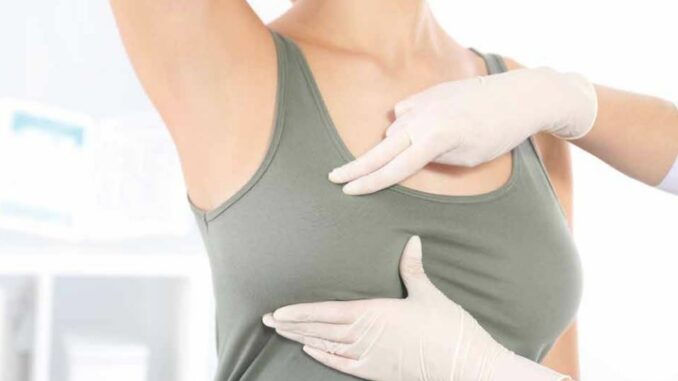
What to Watch For
Since early diagnosis plays such an outsized role in successfully treating breast cancer, people should know what signs to look for and what the screening process will like when you go to the doctor.
SYMPTOMS
According to the American Cancer Society, the most common symptom of breast cancer is a new lump or mass in the breast that wasn’t previously there. A mass that is painless and hard and has irregular edges is more likely to be cancer, but malignant tumors can be soft, tender, round or painful. When you find a new lump, go to the doctor.
This means women need to know what their breasts look and feel like, so regular self-exams are beneficial. Other possible symptoms include swelling of the breast, skin dimpling or irritation, breast pain, nipple retraction, pain or discharge or the skin of the breast or nipple turning red, scaly or thick. Breast cancer also can manifest in swollen nodes in the armpit or around the collarbone.
SCREENINGS
During your annual physical, your doctor will examine your breasts and lymph nodes for changes. This will typically be the first step even when you go in knowing something has changed. Breast tissue can change with time; women develop cysts, and menstruation and menopause can affect tissue as well. Your doctor also will ask you about your family history with all types of cancer, but particularly breast, uterine and ovarian cancers. Based on the exam and discussion, she may decide further testing, such as an ultrasound, is needed.
In an ultrasound, the doctor is able to isolate the affected area and get a visual of sorts of the lump; its size, shape, density and other factors can help her determine if this is a tumor or a cyst or just a change in fatty breast tissue. Another screening is a mammogram, which is an X-ray that can find tumors that aren’t felt with physical exams. These are recommended for all women 40 years old and older, but women who are at higher risk may start them earlier. In addition to tumors, mammograms can find small calcium deposits that are a sign of breast cancer.
Test Your Breast Cancer Knowledge here.


